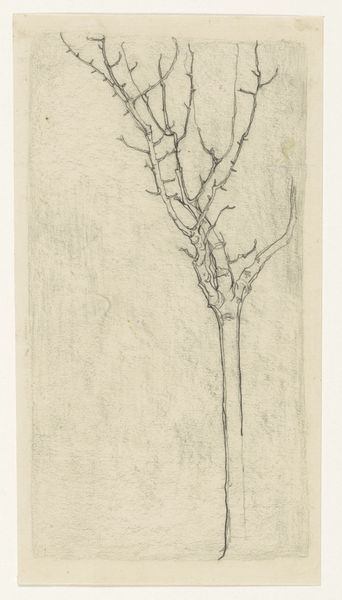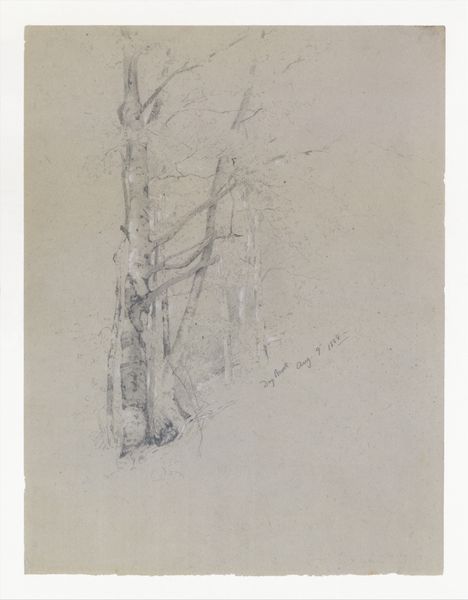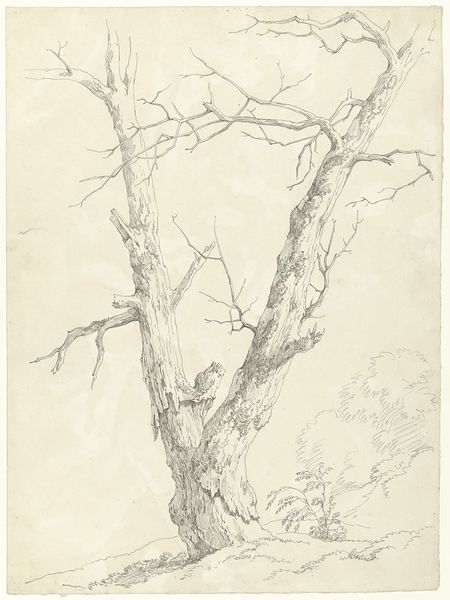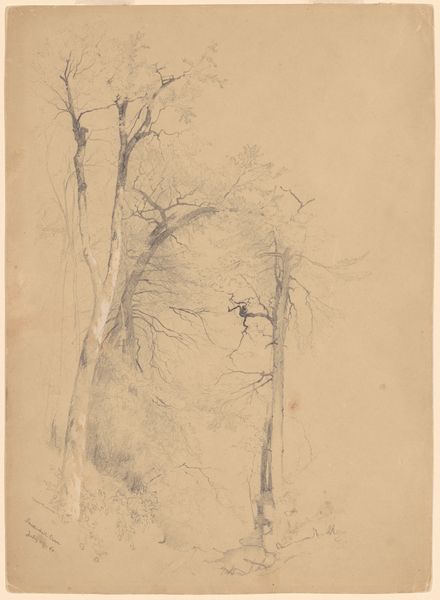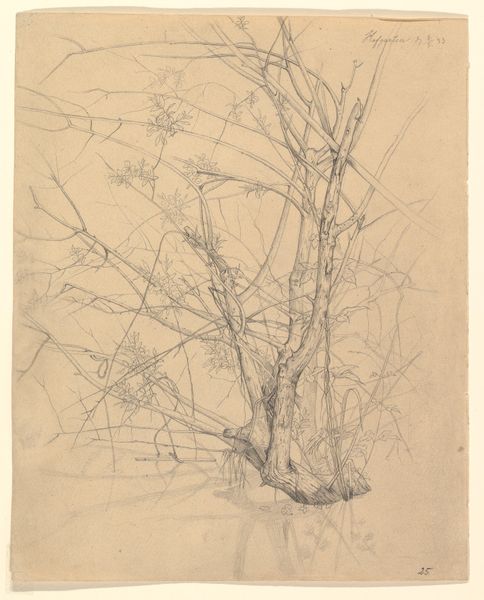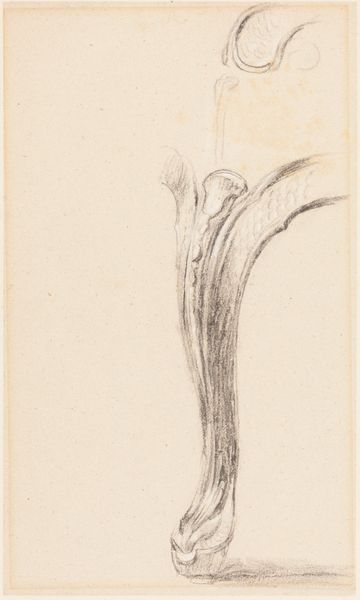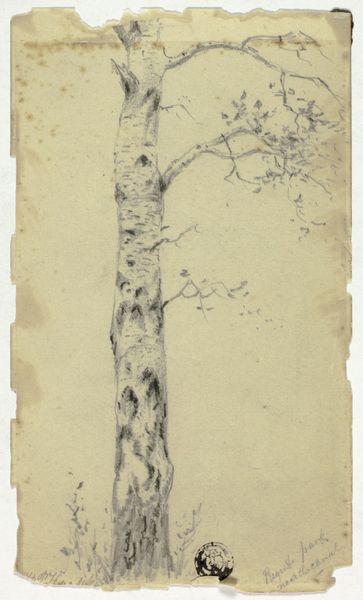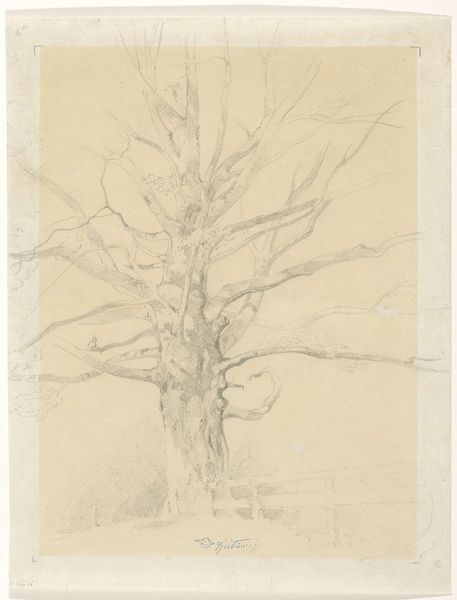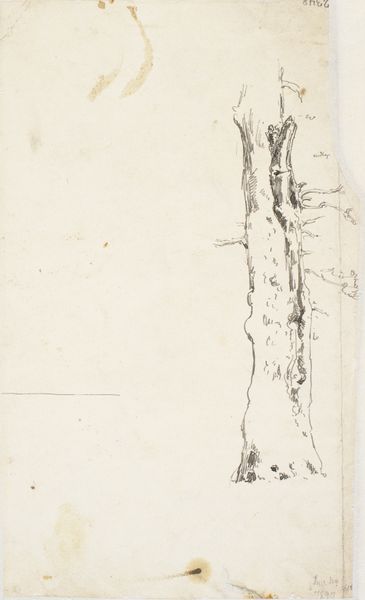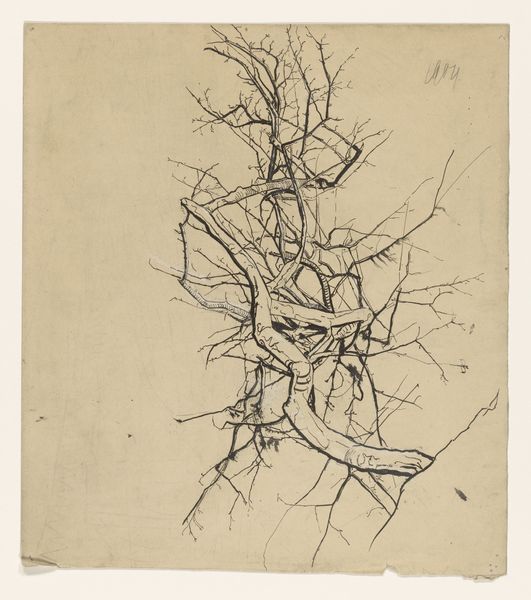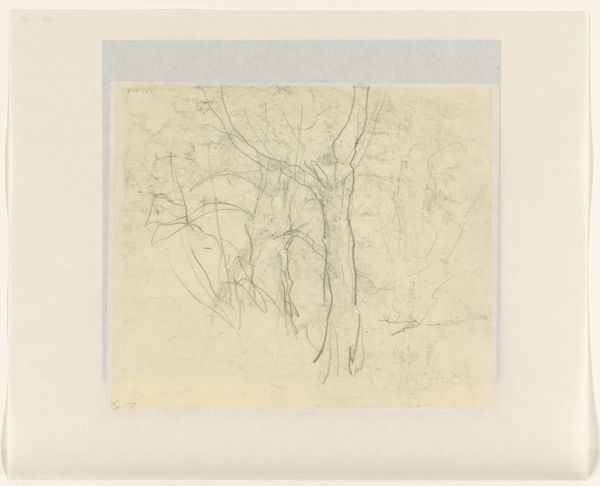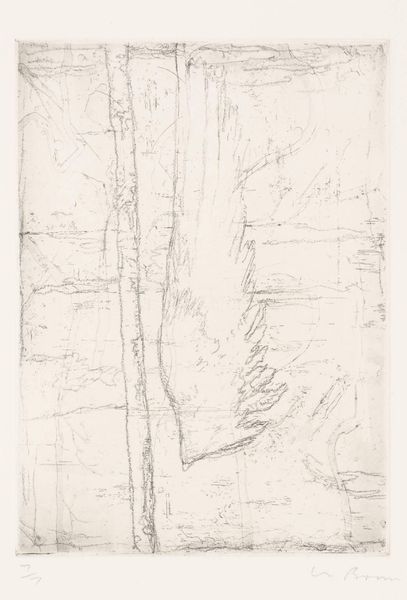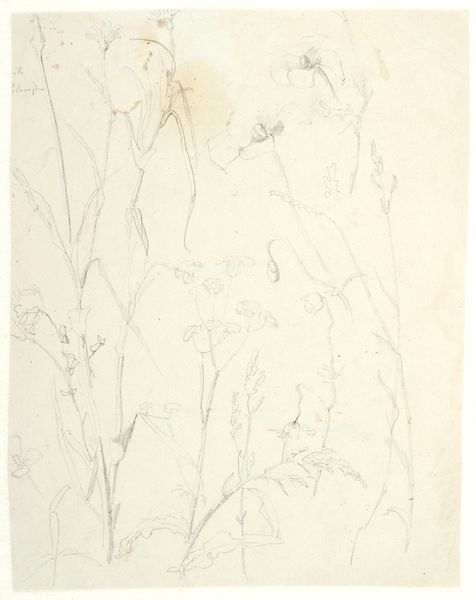
Dimensions: height 348 mm, width 241 mm
Copyright: Rijks Museum: Open Domain
Curator: Before us, we have "Riet," a captivating etching on paper by Philip Zilcken, created sometime between 1890 and 1930. What's your immediate impression? Editor: Ethereal. It’s a whisper of an image, a ghostly botanical form. The thin lines suggest a delicate vulnerability. Curator: Zilcken’s choice of etching allows for incredibly fine detail. Look closely at the texture he achieves; there’s a palpable sense of the paper interacting with the ink. This piece blurs the lines between botanical study and fine art printmaking. Consider the tools, the acid bath, the press... it’s a labor-intensive process to capture this fleeting subject. Editor: Absolutely. And that reed, so common yet here elevated, what could it represent? Reeds often appear in religious iconography as symbols of humility and flexibility. They bend but don’t break. Perhaps Zilcken is hinting at resilience in the face of the changing times reflected in his own life. Curator: Or perhaps Zilcken was more focused on the challenge of depicting the transient beauty of nature. The very process of etching—the corrosive action of acid—echoes nature’s own transformative forces. The impermanence is intrinsic, literally etched in the medium. Editor: That’s a very good point, I can concede that. But notice how the verticality of the reed draws the eye upward? It gives a feeling of growth, aspiration. And given the period, this could also signify a turn-of-the-century longing for simpler, natural values, as a reaction against the sweeping industrial changes occurring around this period. Curator: True. It certainly is a complex piece when we consider the historical context of rapid industrialization. Even the act of selecting this specific reed from, let’s imagine, a ditch – places a certain labor, value, and social message to something often seen as banal or ugly. The artist carefully chose, intervened and crafted. It's that hand and labor that ultimately imbues the subject with deeper significance. Editor: I've learned that even the simplest image can echo powerful emotions, beliefs, and experiences, across time. Curator: Agreed, a thoughtful examination, whether from the vantage of technique, production, and labor—or, from iconography, representation, and symbols—creates a deep appreciation for the artist's complex work.
Comments
No comments
Be the first to comment and join the conversation on the ultimate creative platform.
